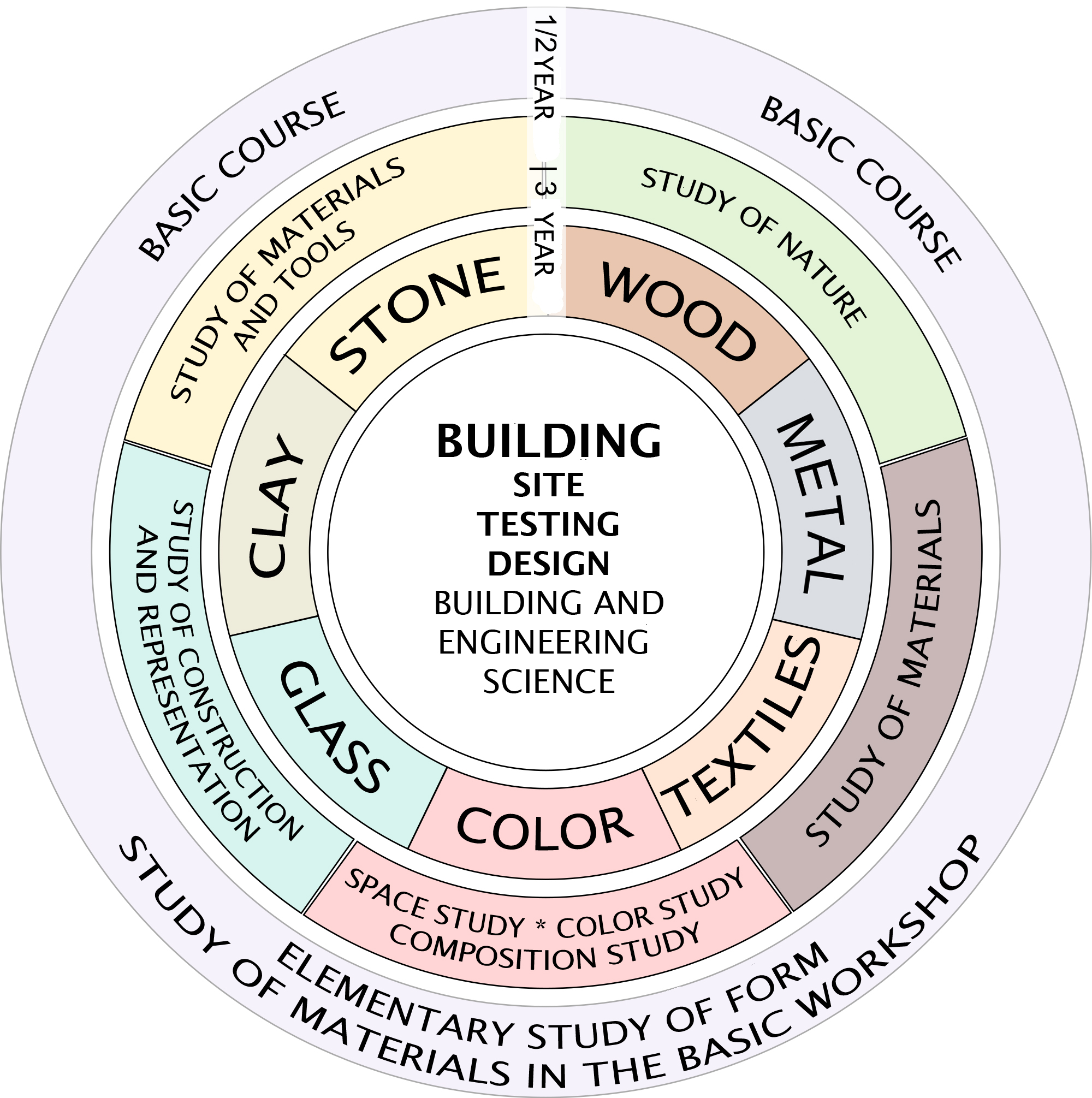
Diagram of the Bauhaus curriculum (image: SuperManu, CC BY-SA 3.0)
Although it did not have an architecture department until 1927, the 1919 Bauhaus charter called the “complete building” the “ultimate aim of the visual arts.” Architecture requires a unification of all media, both arts and crafts:
Let us conceive, consider, and create together the new building of the future that will bring all into one simple integrated creation: architecture, painting, and sculpture rising to heaven out of the hands of a million craftsmen, the crystal symbol of the new faith of the future.Translated in William J. R. Curtis, Modern Architecture since 1900 (Prentice Hall, 1996), p. 184.
In the Bauhaus program of study, diagrammed above as a movement towards the center of a series of concentric circles, all students would start in a half-year or yearlong foundations course in the elements and principles of design, and then each would choose a medium to specialize in: textiles, glass, metal, and so on. The goal was for all of these different specializations to come together in Bau or “building,” the creation of total designed environments, from the structure, to the furniture and tableware, to the rugs on the floor and the paintings on the walls.
The Haus am Horn
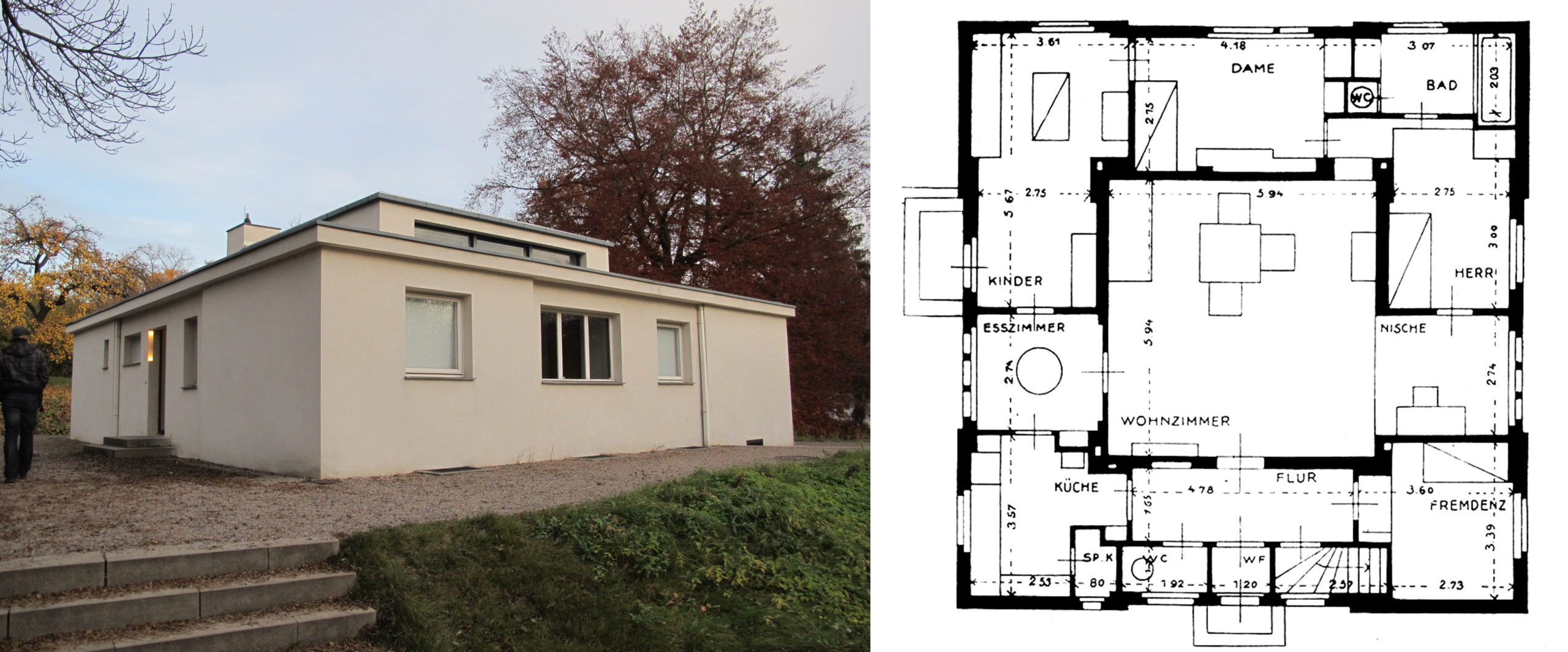
Left: Georg Muche, Haus am Horn exterior (photo: Sailko, CC BY-SA 3.0). Right: plan (image: socks-studio, CC BY-SA 3.0)
This goal was tested in 1923, when the struggling school was given a state loan on the condition that it prove its worth by showing concrete results in a public exhibition. Part of that exhibition was a conventional display of sculptures, paintings, ceramics, textiles, and other objects produced by Bauhaus students and staff. In addition to this, it was decided to build a model house near the school to display Bauhaus designs in a practical, everyday context.
Designed by Georg Muche (oddly, the Bauhaus weaving master), the Haus am Horn is a flat-roofed white cube centered around a living room as the main gathering place for the family. Because it is almost completely surrounded by other rooms, the living room projects above the rest of the house to let in light through clerestory windows. Surrounding it are four bedrooms, along with the entryway, kitchen, pantry, dining room, bathroom, and a small work niche.
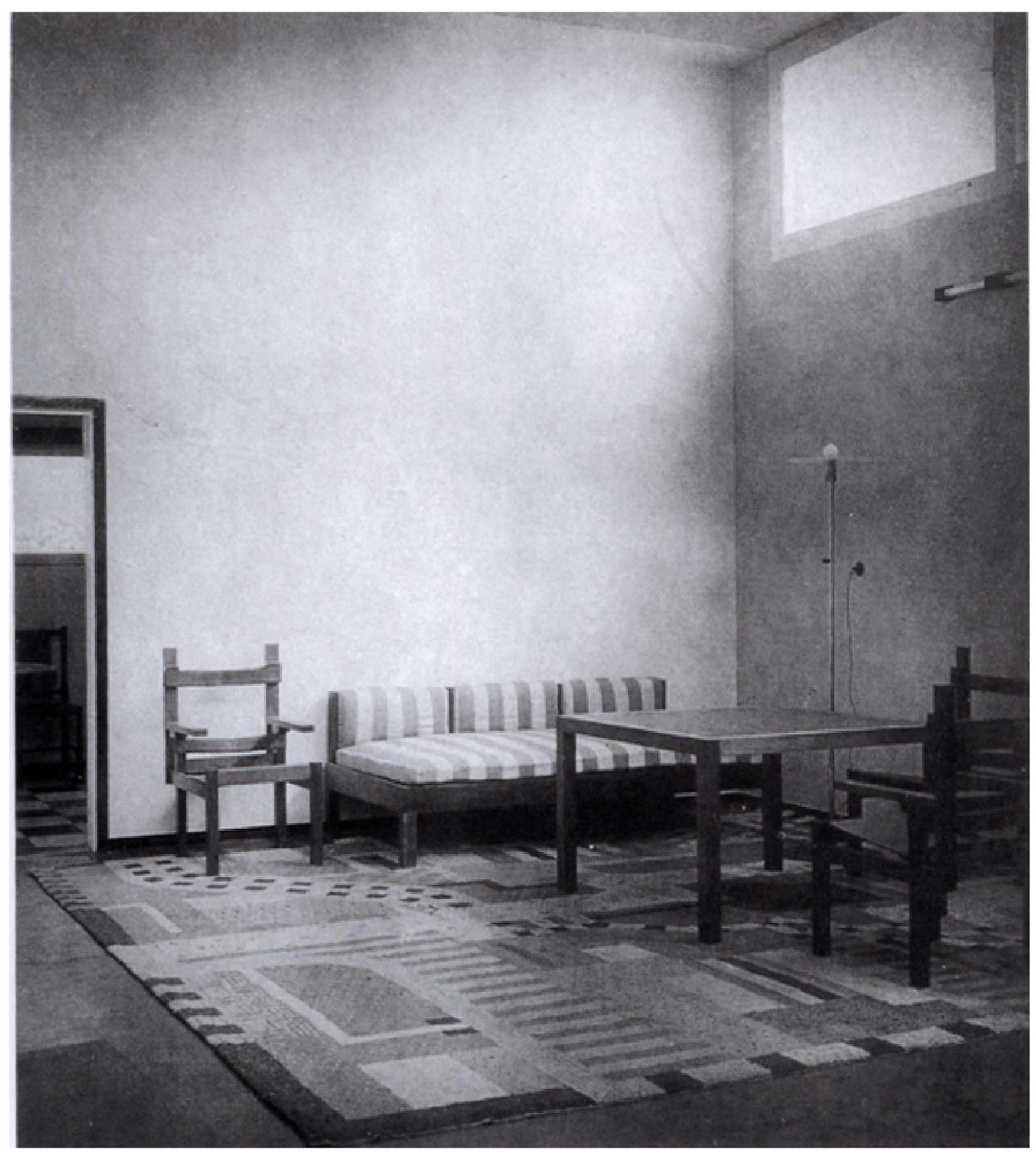
Georg Muche, Haus am Horn, living room with rug by Marta Erps and chairs by Marcel Breuer (photo: socks-studio, CC BY-SA 3.0)
A group effort
All the Bauhaus workshops were involved in the project. The furniture was designed by Marcel Breuer, a student in the woodworking workshop; the rugs by textile students Marta Erps and Gunta Stölzl (who later became head of the weaving workshop); and the lighting fixtures by Lázló Moholy-Nagy in the metal workshop.
Despite the diversity of designers involved, a surprising degree of unity was achieved because every aspect of the project was based on the basic Bauhaus principles of functionalism and geometric rationalism. Purely “decorative” elements were eliminated for the sake of cost-effectiveness in manufacture, efficiency in usage, and harmony in aesthetics. The straight-edge and right-angle geometry of almost all of the objects, from the walls, to the window trim, to the furniture, makes them all harmonize with one another, as does the largely white and cream color scheme, enlivened with a few quiet colors.
The Bauhaus rejection of decoration did not imply a neglect of aesthetics. For Bauhaus designers, beauty was not something to be added to a functional item in the form of extra frills; instead, it was achieved through careful choices of materials, proportions, textures, and colors for the functional features of the objects.
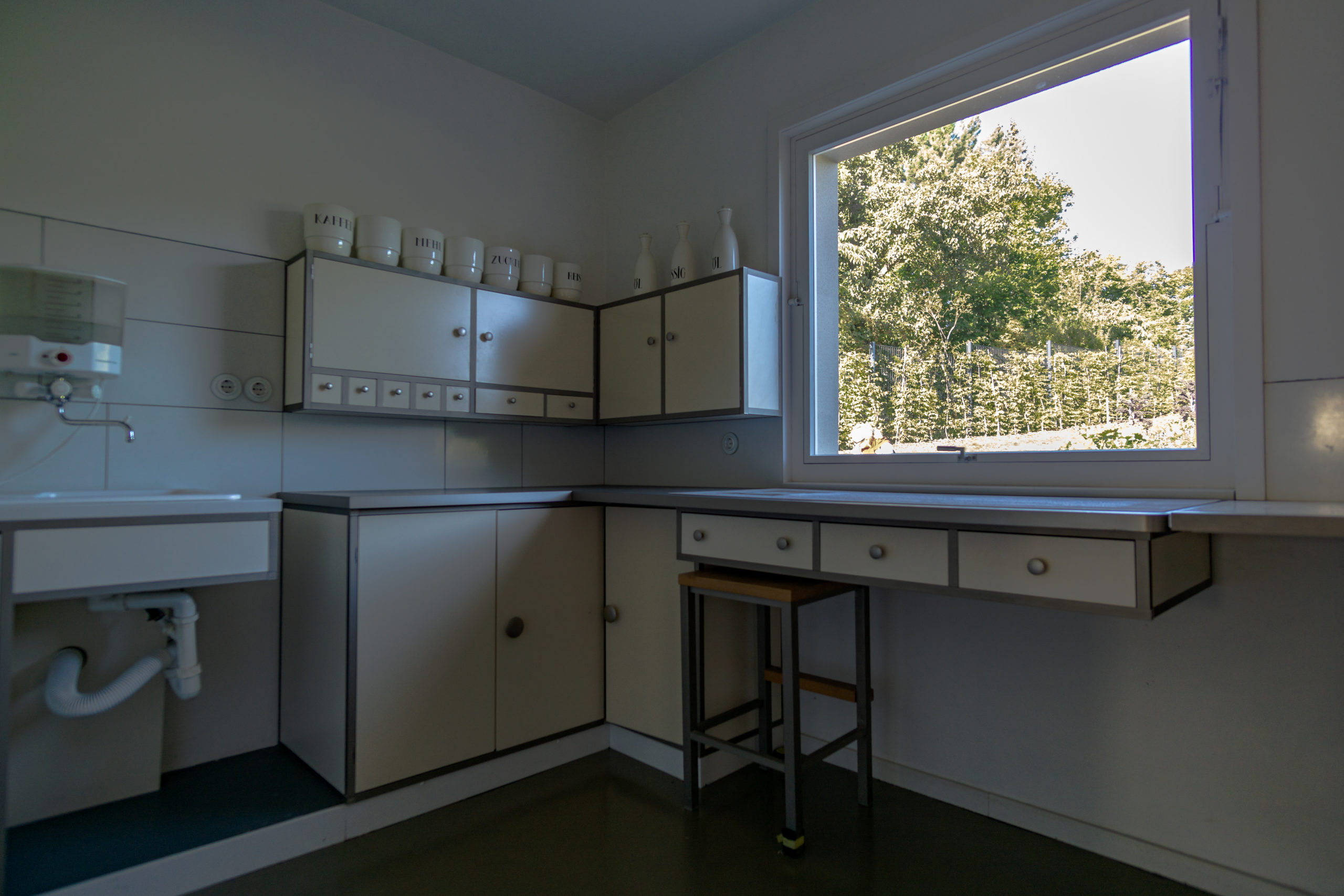
Georg Muche, Haus am Horn, kitchen (photo: Rainer Halama, CC BY-SA 4.0)
The kitchen is a particularly good example of modern functionalist design. Wall-mounted cabinets are built in over a continuous countertop resting on more built-in cabinets between the sink and the cooker. A large horizontal window brings plenty of light into the room during the day, and all necessary items are available at arm’s reach while standing at the counter.
The faces of the cabinets are flush and smooth, apart from simple projecting knobs; there are no moldings, panels, or decorative elements that would collect dirt. The floors throughout are rubber or Triolin, a linoleum substitute, so that all surfaces are easy to clean with a quick wipe. These features are commonplace today, but in the 1920s dedicated kitchens were rare outside upper class households. Most poor and middle-class people had none of the modern appliances seen here. They cooked on a stove in the living room, and used separate furniture for food storage and preparation, rather than an integrated design of built-in cupboards and countertops.
The Bauhaus building, Dessau

Bauhaus Building, Dessau, exterior, 1925-26 (photo: Martavictor, CC BY-SA 4.0)
Due to the hostile political environment in Weimar, after 1924 the Bauhaus was forced to move to Dessau, Germany. The more sympathetic local government there provided the Bauhaus with land and a budget to build its own campus, giving the school another opportunity to fulfill its vision of a holistically-designed modern environment.
The Dessau building was constructed using aggressively modern materials appropriate to the machine age: steel, reinforced concrete, and glass, none of which are disguised with a false facade or ornamented with non-structural embellishments. The three main buildings — shop block, vocational school, and living quarters — are simple rectangular cubes of different dimensions, joined into an asymmetrical pinwheel plan by two connectors: a two-story bridge used for administrative offices, and a one-story building with an auditorium and cafeteria.

Bauhaus Building, shop block with glass corner (photo: Hic et, CC BY-SA 3.0)
The most precociously modern of the three main buildings was the shop block, which is sheathed entirely in glass to let in plenty of natural light. The steel frame structure, proudly visible through the transparent walls, has been recessed, allowing the two glass curtain walls to meet at a corner without a masonry joint.
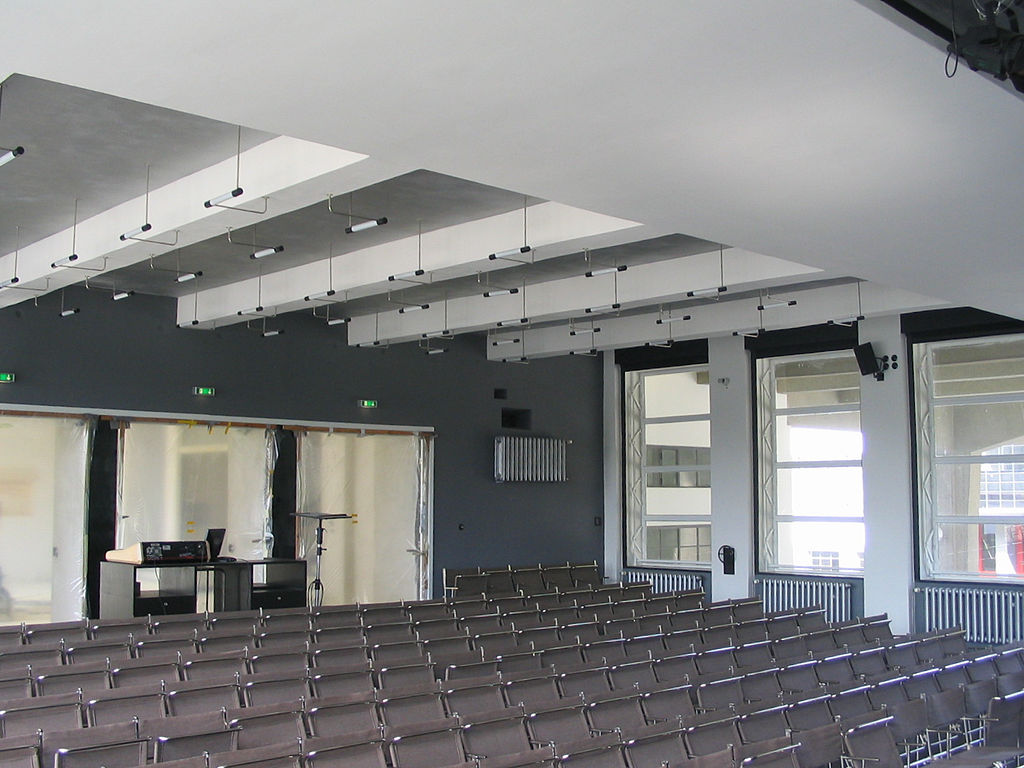
Bauhaus building, auditorium (photo: Cethegus, CC BY-SA 3.0)
The interior spaces are as starkly geometric and functionalist as the exterior, with the furniture and hardware all designed in the school’s workshops. In the auditorium, Marcel Breuer designed the tube-steel seating and Max Krajewski designed the lighting. The 28 apartments for students and junior instructors, each measuring 20 square meters (approximately 215 square feet), are models of spartan efficiency and have shared bathrooms. But there are also surprising amenities, including a small balcony for every room, a roof terrace, and a food lift to connect the ground-floor canteen to the shared kitchens on every floor.
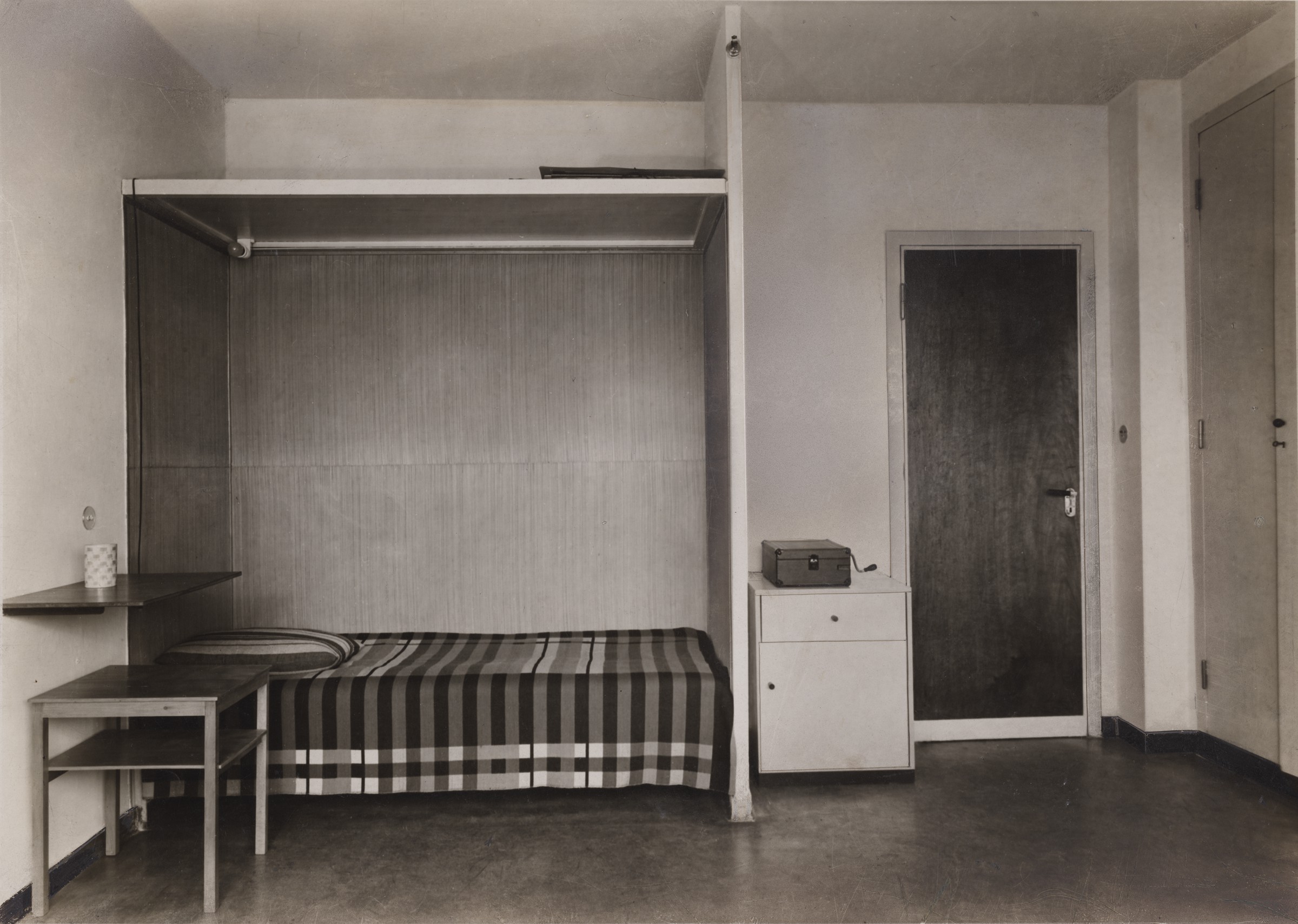
Bauhaus building, student apartment (Harvard Art Museums)
Legacy of the Bauhaus
Just seven years after it moved to Dessau, the Bauhaus was forced to move again, this time to Berlin, where it stayed for only one year before being disbanded by the rising Nazi government. Fleeing the unfavorable political environment as well as a disastrous economic situation, Bauhaus students and instructors spread across Europe and the United States, bringing their modern design principles with them. Two of the former directors of the Bauhaus, Walter Gropius and Mies van der Rohe, went to teach in the United States (in Boston and Chicago respectively), where their designs and teaching helped to form the International Style of corporate architecture that now dominates the urban environment.
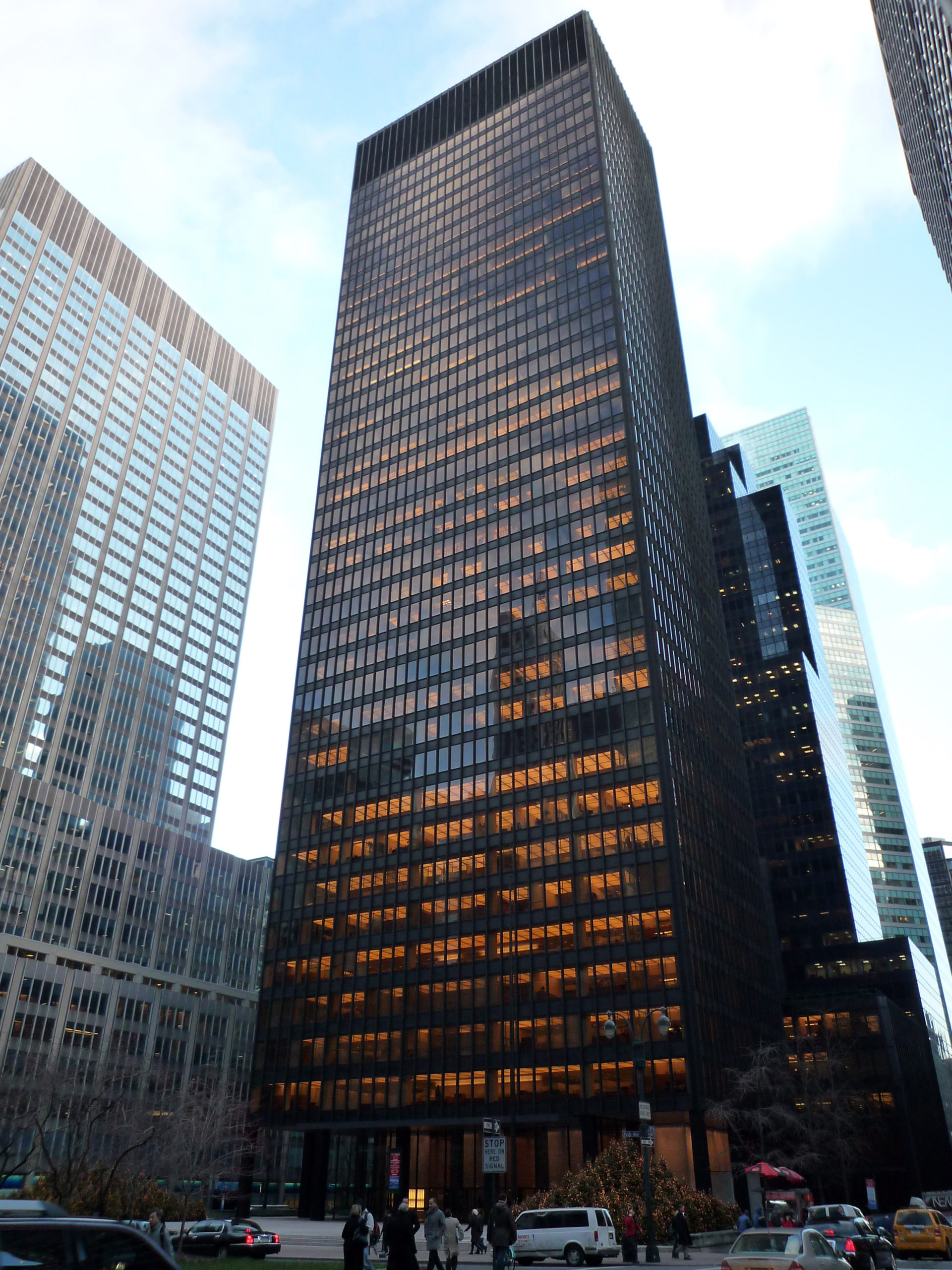
Mies van der Rohe, Seagram Building, New York, 1958 (photo: Steven Zucker, CC BY-NC-SA 2.0)
The promise of the Bauhaus shop block, a building apparently made entirely of glass and steel without the comforting presence of a masonry bulwark, is fulfilled in Mies van der Rohe’s Seagram Building in New York City. Its clear glass ground-floor lobby shows the steel frame and reinforced concrete core that hold the building up, so that its 38-story height appears to stand on stilts. Like the Dessau shop block, there are no decorative flourishes. Mies’s famous motto, “less is more,” embodies the Bauhaus creed that design should be about careful attention to function, materials, engineering, and proportion, not useless decoration. Whether this creed results in livable environments is perhaps a matter of taste, but Bauhaus ideals and designs continue to have an enormous influence today.

